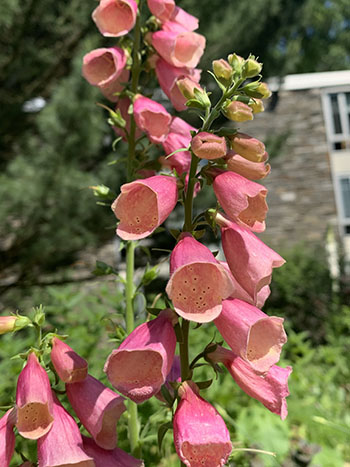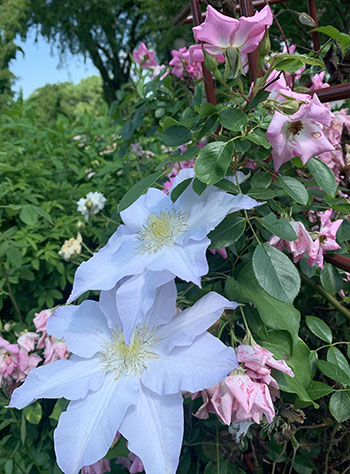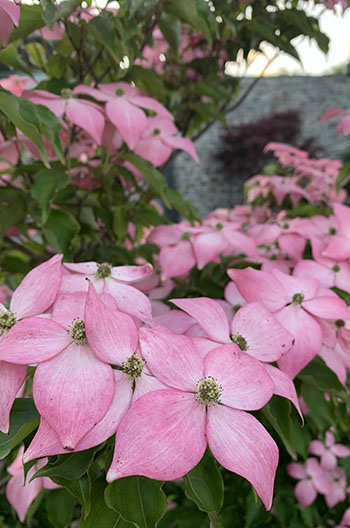
Plants of the Week: May 30
Guest Author: Summer Intern Millie Arevalo

This beautiful plant, Digitalis purpurea (common foxglove) blooms in late spring and early summer. It is a self-sowing biennial taking two years to grow to flower and dying right after setting seeds. Native to Europe, North Africa, and Central Asia, its stem can reach as high as six feet. I was particularly drawn to common foxglove because of the pink-tinted bell-shaped flowers with tiny dots of fuchsia littering the inside of each flower as they droop from one side of the plant. These plants can be found in the Scott Entrance Gardens. Photo credit: M. Arevalo

Clematis ‘Evipo003’Ice Blue™ is a large-flowered white and light blue climber that blooms from May and July. A Raymond Evison selection, Ice Blue™ thrives in partial shade and greenhouse conditions. This variety is endemic to Southern China. You can found this selection growing in the Dean Bond Rose Garden. Photo credit: M. Arevalo

The Scarlet FireTM kousa dogwood tree, Cornus kousa ‘Rutpink’, has large bracts with deep fuchsia coloring. This plant was patented and bred over the span of a decade by Rutgers University Professor, Thomas Molnar. Cornus kousa is renowned for its white blooms while Scarlet FireTM was bred to be fuchsia. Along with the aesthetic coloring of the flowers, this species was bred to be more resistant than the natural dogwood to pests and diseases. Experience the fuchsia color for yourself in front of the Science Center. Photo credit: M. Arevalo
Thank you for joining me as I familiarize myself with the Scott Arboretum. These inspirational blooms and vibrant colors are a lush and stark contrast to my home state of Texas’ botany. Stop by the Scott Arboretum, open from dawn to dusk, to see these striking colors and textures in-person.





No Comments